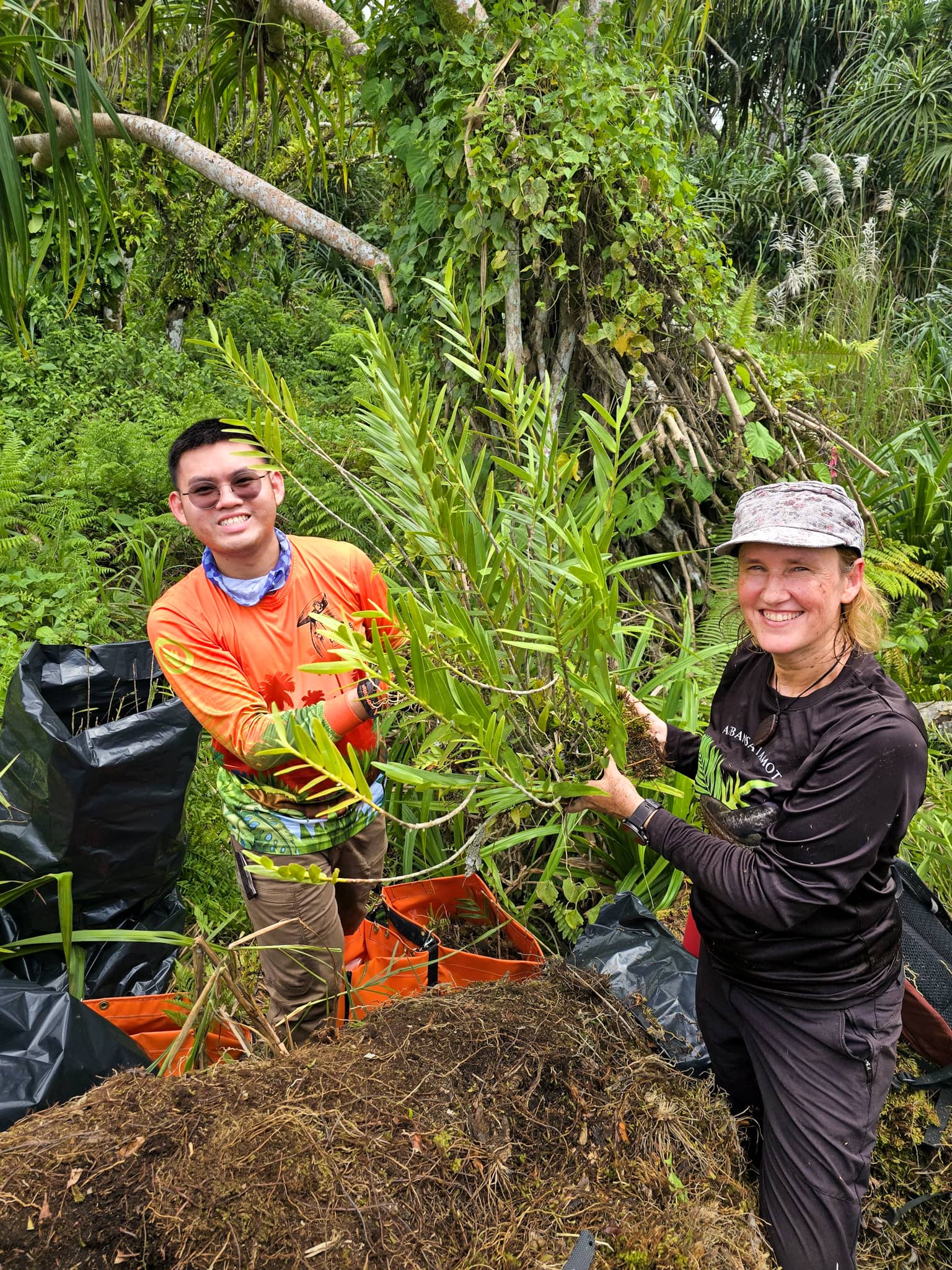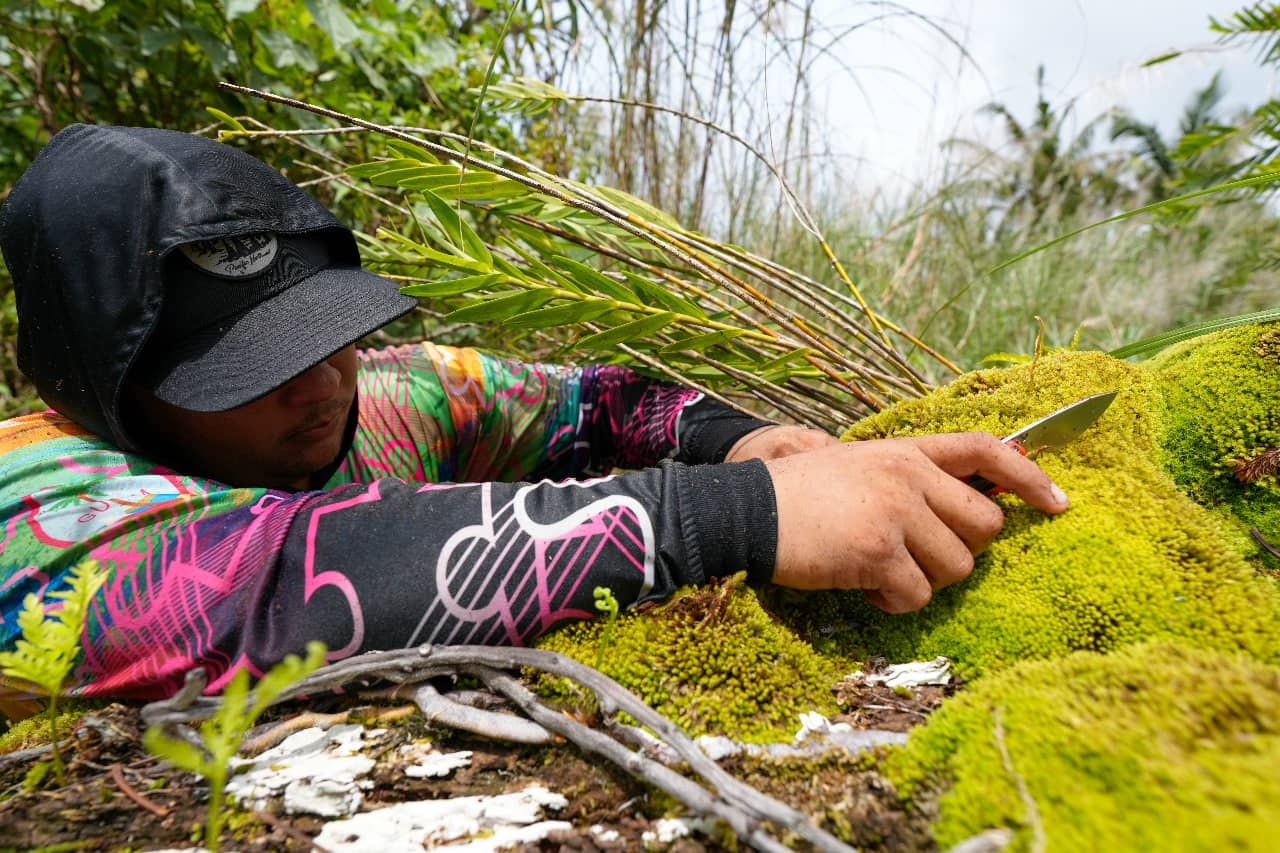UOG Center for Island Sustainability and Sea Grant Natural Resources team rescues endangered orchids
UOG Center for Island Sustainability and Sea Grant Natural Resources team rescues endangered orchids
UOG Center for Island Sustainability and Sea Grant Natural Resources team rescues endangered orchids
10/17/2024
The University of Guam Center for Island Sustainability and Sea Grant’s (UOG CIS & SG) Natural Resources team recently rescued threatened species of native orchid left vulnerable.
Decaying old trees are a natural and essential part of a forest’s life cycle. As trees age, they become more fragile and eventually fall. This process creates open space in the forest allowing new seedlings to thrive. In some cases, these trees are hosts to rare and threatened orchids.
The UOG CIS & SG Natural Resources team from the UOG CIS Island Conservation Lab recently trekked into the jungles of Guam and retrieved over 12 clusters of native orchid species, that were displaced when an old yoga tree fell.
Dendrobium guamense, Bulbophyllum guamense, and Coelogyne guamensis are epiphytic orchids, meaning they grow on other plants for support, in this case the yoga tree. Dendrobium guamense and Bulbophyllum guamense are only found naturally in Guam and the Commonwealth of the Northern Marianas, while Coelogyne guamensis is also found in Palau.
“It is important to preserve the genetic diversity of each orchid population, especially because they are threatened with extinction,” said Else Demeulenaere Ph.D., Associate Director for Natural Resources at UOG CIS & SG.
The rescued orchids will be cared for at the UOG CIS & SG rare plant nursery, where they will receive the necessary treatment to thrive before being reintroduced to a suitable habitat.
“After the orchids recover in the nursery, they will be returned to the forest on new host trees,” said Vince Fabian, Program Manager at UOG CIS & SG Natural Resources division. “We will tag them so we can track their origins and monitor their health in the future. These reintroductions also give us the opportunity to observe reproductive activity to see if these salvaged orchids are increasing in numbers after transplanting.”
Following their recovery, the public may also be able to assist with the care of these orchids through the Táiparehu Program the group will be launching soon.
This rescue is just one part of the work the team is doing to protect, preserve and conserve our natural resources on Guam.
“Our team is involved in forest restoration projects where we remove invasive species and plant native trees. We have several endangered species recovery programs, policy and natural resources planning-related programs, and, lastly, ethnobotanical projects,” explained Demeulenaere.
The UOG Center for Island Sustainability and Sea Grant is dedicated to fostering a sustainable, equitable, and prosperous future for Guam and the Micronesian region. Through research, education, and outreach programs, the CIS and SG works to address the challenges of island living and develop solutions for a greener tomorrow.
For more information about the center and the work it is conducting at the university, visit uog.edu/cis and follow @uogcis on Instagram and Facebook.


